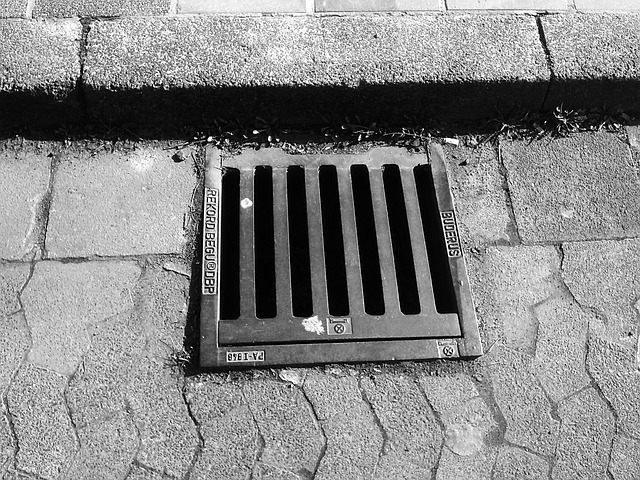Prevent kitchen drain clogs by understanding causes (grease, food debris), adopting good hygiene practices (avoid pouring grease, use strainers), and maintaining drains with regular cleaning and natural cleaners. Equip yourself with tools like plungers and snakes for minor to stubborn blockages. Unclog sinks with a baking soda, vinegar, and boiling water mixture. Choose natural methods over chemicals for long-term pipe health. Use advanced techniques (drain snake, hydrojetting) for persistent clogs. Implement weekly hot water flushes and inspect pipes for damage. Strategically approach cleaning: use ventilation, clear debris first, avoid pouring hot water alone, opt for natural solutions to prevent pipe damage.
Tired of dealing with clogged kitchen drains? Understanding the root causes, such as grease buildup, food debris, or foreign objects, is the first step to effective prevention. This article equips you with essential tools and offers a comprehensive guide to unclogging your sink. We explore natural vs chemical cleaning methods, advanced techniques for stubborn blockages, and a regular maintenance routine to keep drains clear. Learn how to avoid common mistakes and master drain cleaning like a pro.
Understanding Kitchen Drain Clogging: Common Causes and Prevention Tips

Kitchen drain clogs are a common household issue, often caused by a buildup of grease, food debris, and other substances. Understanding the root causes is the first step in effective prevention. One major culprit is pouring grease down the drain after cooking, as it solidifies and congeals with other particles, leading to blockages. Regular cleaning and proper disposal methods can mitigate this. Additionally, food scraps, especially oily or starchy ones, should be avoided; using a fine mesh strainer at the sink can help catch these before they enter the drain.
Prevention also involves maintaining good hygiene practices in the kitchen. Encouraging family members to be mindful of what goes down the drain—no foreign objects like rubber gloves, paper towels, or sanitary products—can significantly reduce clogs. Regular deep cleaning, including scrubbing pipes and using natural drain cleaners, is another effective strategy. Keeping a close eye on these simple measures will go a long way in ensuring smooth drainage and avoiding costly and inconvenient drain cleaning services.
Essential Tools and Equipment for Effective Drain Cleaning

When it comes to effective drain cleaning, having the right tools and equipment makes the task faster, easier, and more efficient. Some essential items include a plunger, a snake or auger, and a set of wrenches. A plunger is a versatile tool that can clear minor clogs by creating a suction force. Snakes or augers are flexible metal cables designed to break apart and remove stubborn blockages. Wrenches are necessary for loosening and removing pipes or fittings if the clog is deeper in the drain.
Additionally, consider having a drain cleaner’s kit, which often includes a combination of these tools along with protective gear like gloves and safety goggles. These kits are convenient and provide an array of cleaning options tailored to different drain issues. Investing in these essential tools ensures that you’re prepared for routine maintenance or more complex drain cleaning tasks, keeping your kitchen drains functioning optimally.
Step-by-Step Guide to Unclogging a Kitchen Sink

Unclogging a kitchen sink is a common household task that can be tackled with the right tools and a systematic approach. Start by gathering materials like a plunger, baking soda, white vinegar, and hot water. First, pour 1/2 cup of baking soda down the drain to create a frothy reaction. This step helps to break up any built-up grease or grime. Next, slowly pour 1 cup of white vinegar into the drain, followed by 4 cups of boiling water. The combination of these ingredients will help dissolve any obstructions.
After allowing this mixture to sit for about 30 minutes, use a plunger to push and pull the plug gently but firmly. If the clog persists, repeat the process, making sure to flush the drain with hot water afterward. Regular maintenance and prompt action when a clog occurs are key to preventing future blockages, ensuring smooth drainage in your kitchen sink.
Chemical vs Natural Drain Cleaning Methods: Pros and Cons

When it comes to cleaning kitchen drains, one often faces a choice between chemical drain cleaners and natural methods. Chemical solutions have been a popular go-to for many years due to their perceived effectiveness in tackling stubborn clogs quickly. However, they can be harmful to pipes over time and pose risks to those who handle them. These chemicals are potent and can cause skin irritation or respiratory issues if not used properly.
Natural drain cleaning methods, on the other hand, offer a safer alternative for both your health and the environment. Enlisting ingredients like baking soda, vinegar, or salt can be surprisingly effective in unclogging drains without leaving behind toxic residues. While these natural solutions may require more time and effort, they are cost-effective, eco-friendly, and promote long-term pipe health by preventing clogs naturally.
Advanced Techniques for Persistent Kitchen Drain Blockages

When dealing with persistent kitchen drain blockages, it’s time to explore advanced techniques that go beyond the standard methods. One effective approach is using a drain snake or auger, a flexible metal cable that can be inserted into the drain and manipulated to break up and remove obstructions. This method is particularly useful for stubborn clogs caused by grease buildup or foreign objects.
For more complex cases, chemical drain cleaners can be employed. These solutions, however, should be used cautiously due to their potential harm to pipes and the environment. Enzymatic cleanouts are a safer alternative, using natural bacteria to dissolve organic matter. Additionally, hydrojetting offers a powerful solution by using high-pressure water to clear drains, making it ideal for thorough kitchen drain cleaning.
Maintain Your Kitchen Drains: Regular Cleaning and Maintenance Routine

Maintaining your kitchen drains is an essential part of regular home upkeep. By implementing a simple cleaning and maintenance routine, you can prevent clogs and ensure smooth drainage. Start by using hot water to flush out any built-up grease or debris once a week. This basic step goes a long way in keeping drains clear between professional cleanouts.
In addition to regular flushing, employ the use of natural drain cleaners like baking soda and vinegar. These eco-friendly options are effective at breaking down organic matter and clearing minor clogs without harsh chemicals. Regularly inspect pipes for signs of corrosion or damage, addressing issues promptly to avoid bigger problems down the line.
Common Mistakes to Avoid During Drain Cleaning

When tackling drain cleaning, a common pitfall is using harsh chemicals without proper ventilation. This can lead to harmful fumes and respiratory issues. Always ensure adequate airflow or wear protective gear when using chemical cleaners. Another mistake to avoid is not clearing debris at the outset. Clogs often start with small particles that, if left behind, will quickly rebuild. Before applying any cleaner, remove hair, grease, and food scraps from the drain using a plunger or a bendy drain snake.
Moreover, it’s crucial not to pour hot water alone down the drain as a cleaning method. While it may seem like a quick fix, this can push debris further down the pipe, causing more severe clogs. Instead, combine baking soda and vinegar for a natural, safe, and effective cleaning solution. Steer clear of using excessive amounts of chemical cleaners or rough tools that can scratch pipes, causing damage over time.
